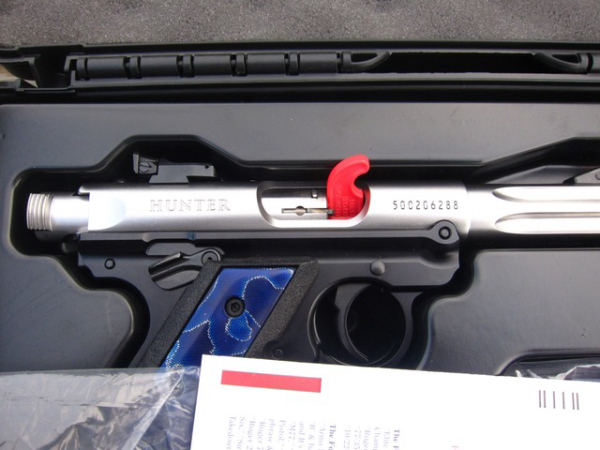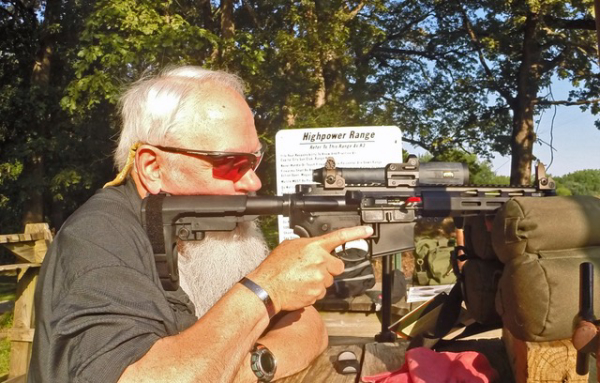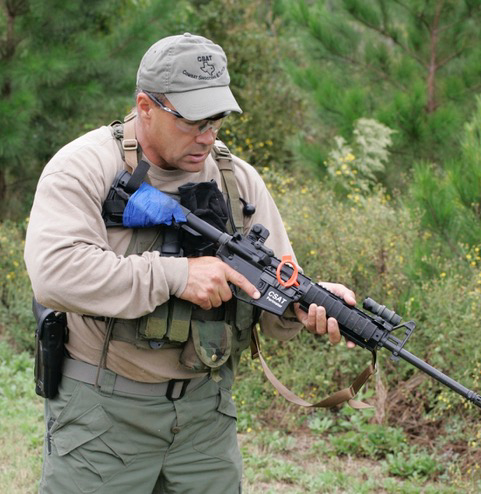
One of my least favorite -- and most critical -- parts of friend Stephen Wenger’s news digest are the Rules Reminders. These feature the “ugh” moments that are parts of our daily lives.
Recently, I saw a video linked in social media. It depicted an on-duty, in-uniform police officer in a gun shop. Apparently he’d asked to see a handgun, which was removed from the display case and handed to him.
The clerk didn’t remove the magazine nor lock the slide back. The officer likewise failed to check the piece – and contrived to muzzle all the other patrons in view of the security camera. He also muzzled his hand – and then fired the gun.
The title of the video indicated he sued the gun shop. This was likely because putting one’s hand in front of a muzzle and pressing a trigger makes the gun fire – and he hadn’t been warned that it was a likely result.
Sadly, the comments in social media were seemingly engineered to push everyone into a deep depression. “Guns aren’t loaded in the gun shop. If they’re in the gun shop, they’re empty.”
No.
That’s why Rule 1 is Rule 1. Understanding and living that rule means that you will always act in accordance with the next two Rules – which are the ‘main physical safety checks.’ They are main physical safety checks because (1) they indicate disciplined gun handling and (2) anyone watching can see that the gun handler is a pro.
A real pro. Not an amateur in a uniform.
Rule 1: All guns are always loaded – is often misstated as “treat every gun as if it were loaded.”
No. That’s not the point. The point is “all guns are always loaded.” If all guns are always loaded, we ensure the muzzle never covers anything we’re not willing to destroy. If all guns are always loaded, we ensure the muzzle is in the safest available direction in the environment. Likewise, we only press the trigger – for dry practice, disassembly or doing a function check – when the muzzle is in the safest direction available.
And we never allow the muzzle to cover our hands -- and other stuff that’s made of flesh, bone and blood.

In recent years, our local gun club has gone to ‘flagging’ all firearms – rules mandating that no one touch guns while people are in the forward area (down range) not being enough, I thought. After some time, I find that the “chamber flag” rule is a pretty good one when guns are out and people are doing what they need to shoot on a club range.
Many manufacturers ship guns with chamber flags in place. Even for those who don’t, chamber flags are commonly and cheaply available. The idea is that a gun that’s out of battery – action open to the point that the mechanism cannot function – and with an obstruction in the chamber, makes life a little easier on the firing line.
Flagging the guns on a range, whether for practice or during matches is a practice way to visually see that a firearm is incapable of being fired. Looking around the web to learn about the practice was instructive.
“When handling any rifle or firearm, the action must be open with a CBI (Clear Barrel Indicator), ECI (Empty Chamber Indicator) or OBI (Open Bolt Indicator) inserted. Gun actions must remain open except when the gun is on the firing line and preparation or firing periods have begun. When shooting is finished, the action must be open and a CBI/ECI/OBI must be inserted, even when the gun is on the firing line. The gun action may be closed when it is placed in a gun case or storeroom, but must be opened and a CBI/ECI/OBI inserted as soon as it is picked up again.” Civilian Marksmanship Program, “SAFETY” page.


This makes mandatory a visual and physical inspection of the firearm each time it’s handled – a good plan.
For operational use of long guns, I like the Chamber Safe ?Chamber Blocking Device. It’s a device I’d seen years back and thought little of, until MSG Paul Howe (ret’d) instructed me in its use. More lately, I’ve taken to the Hornady Rapid Rack. It’s similar in appearance to a Chamber Safe, but made to rack the action, chambering a round when needed. It serves as a chamber flag when at the range too.
Folks, let’s all follow the rules. Let’s all accept direction when someone reminds us to “mind the muzzle.” It’s civility . . . but with guns.
-- Rich Grassi